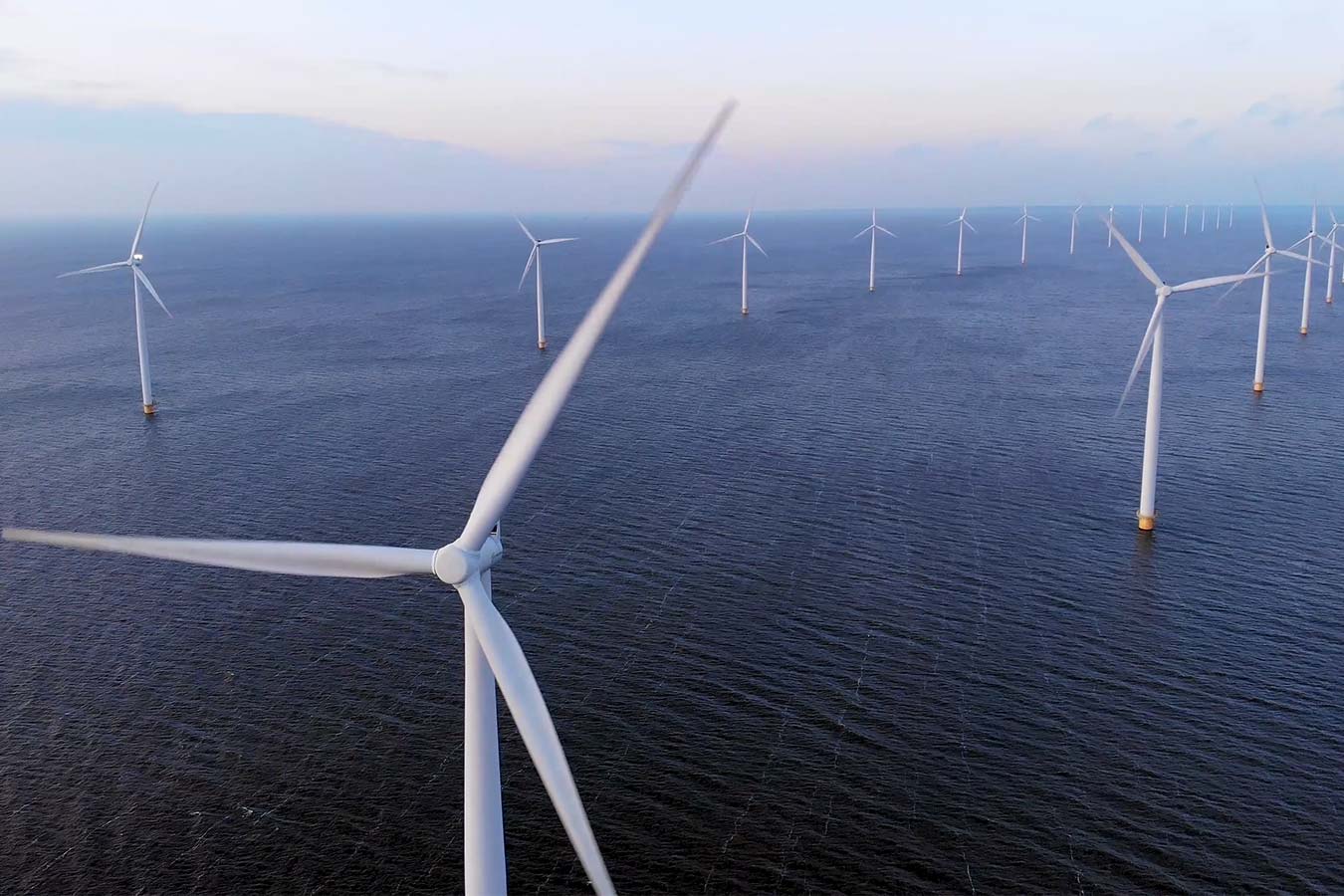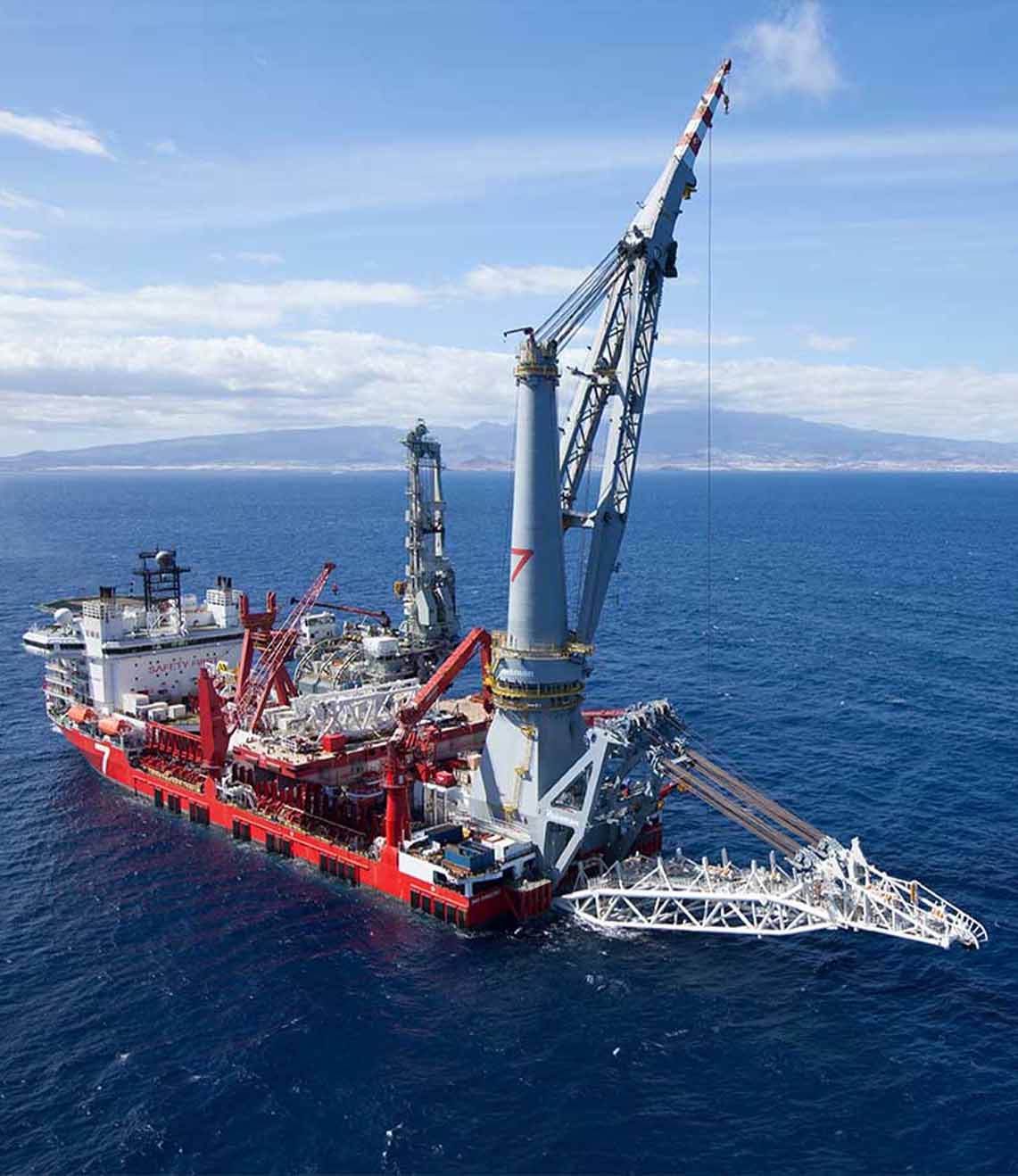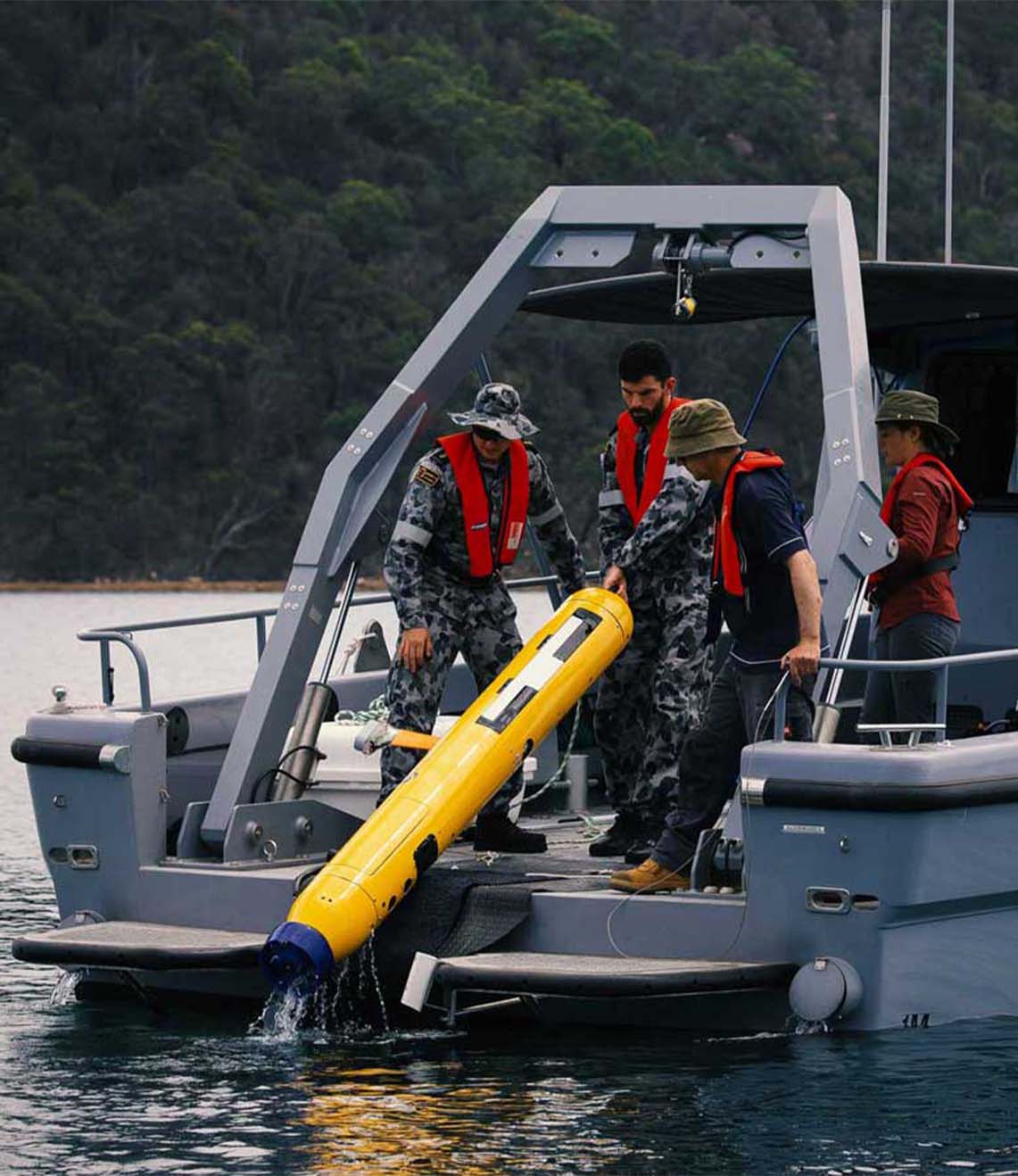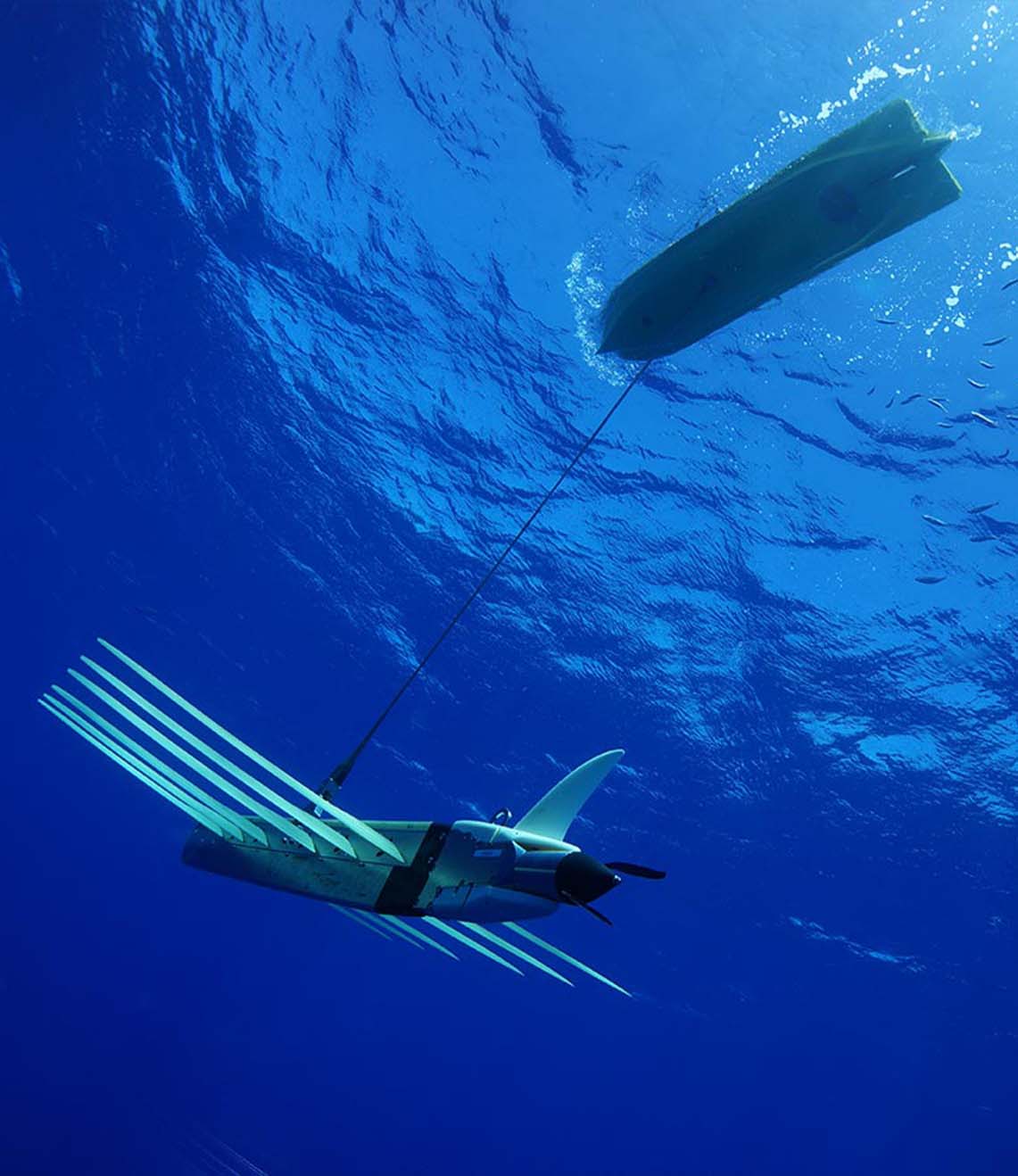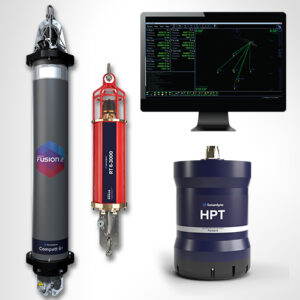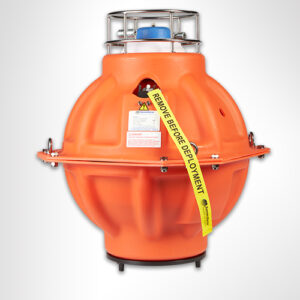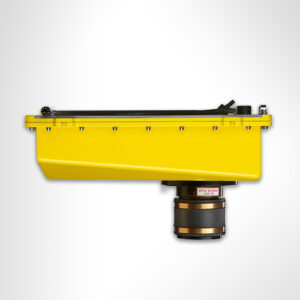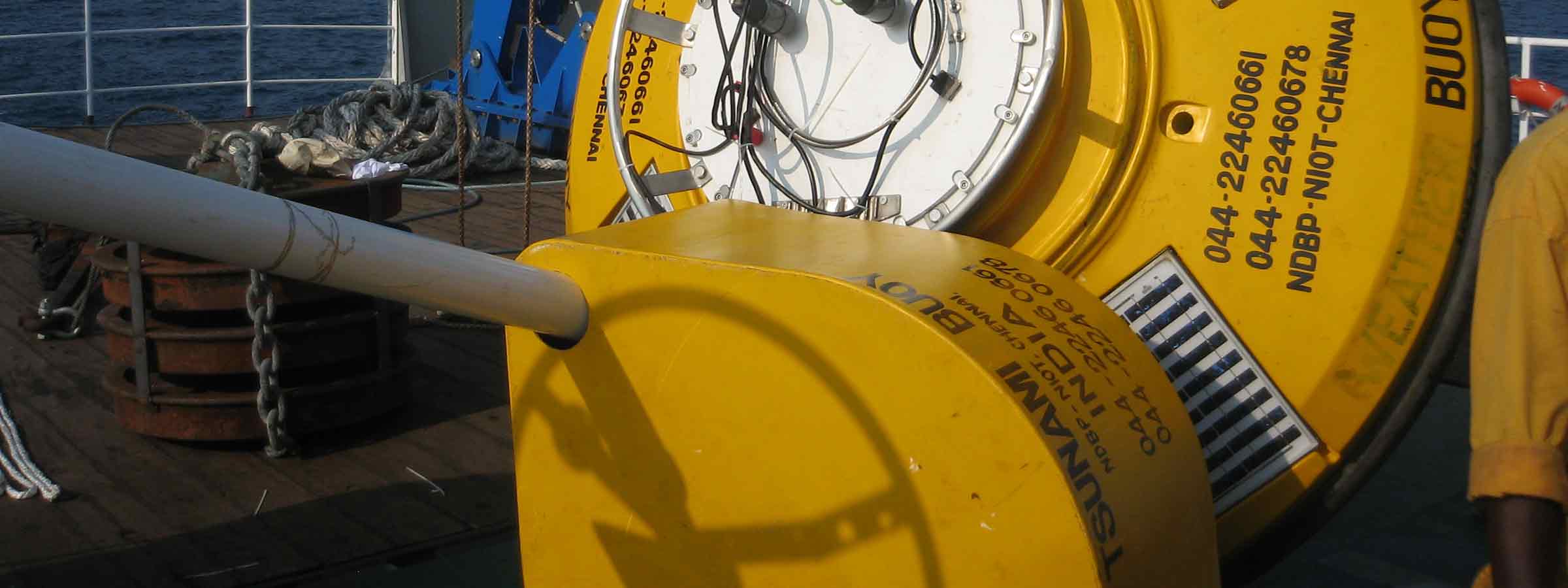
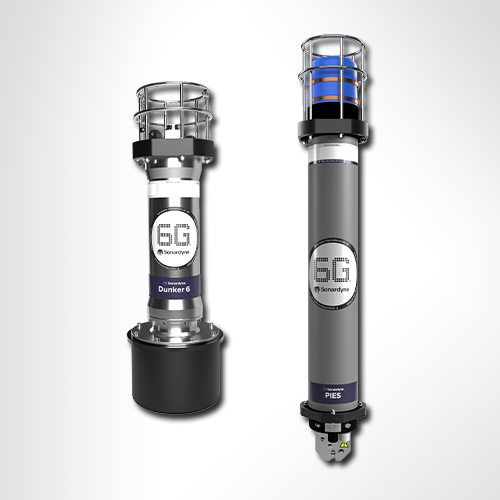
Developed, supplied and maintained in partnership with MSM Ocean, our Tsunami Early Warning System (TEWS) provides vulnerable coastal communities with early warning of an approaching tsunami wave. TEWS combines our robust acoustic instruments together with MSM Ocean’s IALA compliant buoy and easy to use shore control centre software to provide unrivalled system availability.
At a glance
All-in-one wireless solution for detecting tsunamis; no fixed sea-to-shore infrastructure required
Detects height variation on the water surface as small as 1 mm; a change of 3 cm launches a tsunami event (tsunami alert)
Generates Deep-ocean Assessment and Reporting of Tsunamis (DART®) warnings which can be received onshore within seconds of a confirmed tsunami event
Low cost of ownership; COTS technology with long service intervals
IALA compliant buoy for increase safety of the system to guarantee availability
Remote monitoring and control for ease of operation
Intuitive shore control interface using MSM Ocean’s NETCOM-TS software
Suitable for
Trusted to protect coastal communities
Want to find out more?
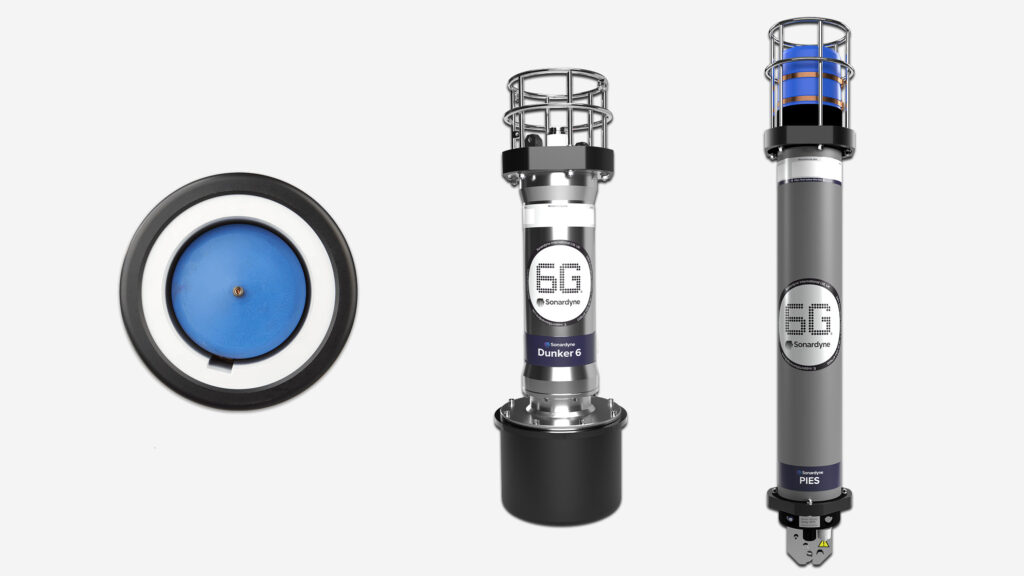
We use secure digital acoustic communications to ensure a reliable seabed-to-surface link that's always available
Buoy-mounted dunker to command the BPR and receive emergency signals
All-in-one BPR containing sensors, battery pack and acoustic modem
Integrated acoustic release mechanism for easy recovery for services. No need for ROV recovery
Benefits of Sonardyne/MSM Ocean TEWS technology
Easy ownership
Our warning system is commercial-off-the-shelf, can be acquired easily, delivered in short timescales and commissioned without any significant national investment in, or construction of, sea-to-shore infrastructure.
It's integrated
Competing warning systems are often made up of individual sensors, battery packs and modem with vulnerable connectors and cables. Together with MSM Ocean, we provide a one-stop shop solution that's rugged and robust.
It's proven
The system's built using proven, high security wireless seabed to shore monitoring and communications technology, with proven performance in detecting tsunamis.
Overview
The core of MSM Ocean’s and Sonardyne’s TEWS is a battery-powered, seabed deployed monitoring transponder – often referred to as a bottom pressure recorder (BPR) – typically installed hundreds of miles off the coast. This is connected to shore by underwater acoustic and secure satellite telemetry links via MSM’s surface buoy and integrated datalogger that acts as a communications gateway.
A tsunami wave in deep water creates a small (a little as 3 cm) but measurable change in pressure that can be maintained in excess of 20 minutes. The sensitive pressure sensor in the BPR detects that small, but continuous change in water pressure, which triggers transmission of a series of warning messages up to a surface buoy moored above it. From there, it is forwarded by satellite transmission to a shore control centre, where it can be integrated with other seismic sensors so that a warning can be issued to vulnerable coastal communities and response agencies.
This means that the first message warning of a tsunami, caused by a small variation in water pressure on the seabed thousands of miles from shore, can be in the office of the monitoring organisation within minutes, if not seconds.
The BPR transponder is a customised version of our highly successful Compatt 6 seabed transponder, featuring pressure sensing, processing, data storage and proprietary Wideband 2 digital acoustic technology to provide robust data transmissions in difficult acoustic environmental conditions. The all-in-one design offers significant advantages over rival systems; easy to deploy, no vulnerable cable and integrated acoustic release for simple recovery.
Operating in the LMF (14 – 20 kHz) band, the BPR is supplied with a buoy-mounted transceiver, but also works with any of our compatible surface dunkers or transceivers, including a Ranger 2 LMF HPT. This two-way link also enables the unit to be remotely configured, for example, if the operator wishes to put the unit into an alert mode in anticipation of a tsunami.
Optimised for low-power consumption, our standard configuration of BPR offers deployments up to four years in water depths to 7,000 m. BPRs can also be housed in a glass sphere housing with extra-long life battery. This combination supports deployments of up to nine years in water depths down to 7,000 m without needing to recover the instrument for servicing.
The BPR continuously monitors water pressure, saving data every 15 seconds and in routine operation acoustically transmits this data hourly to an IALA compliant buoy on the surface. Alongside this, the instrument runs the same NOAA algorithm as used in the Deep-ocean Assessment and Reporting of Tsunamis (DART®) system, which compares the measured pressure with the predicted tidally modified pressure based on the previous three hours history to correct for local conditions. If two consecutive differences between both measurements exceed a pre-set threshold (usually three centimetres), the instrument switches into an alert mode and transmits a sequence of messages containing high-resolution pressure data to the surface over the next few hours.
At service intervals, a vessel equipped with a Ranger 2 USBL tracking system or over-the-side acoustic dunker can visit the location of each BPR and send a secure command instructing the BPR to activate its acoustic release mechanism, allowing the unit to float back to the surface. Once onboard, operators can inspect the unit for damage then proceed to replace the unit’s battery pack, finally preparing the unit for re-deployment.
Sonardyne’s and MSM Ocean’s TEWS is a comprehensive solution to national tsunami early warning, from detection through to population evacuation.
Once an alert message is received at the surface, it is relayed to a Shore Control Centre (SCC) using dual Iridium satellite communications terminals fitted to MSM Ocean’s gateway buoy.
Using the NETCOM-TS web application, operators can control every aspect of the system; from monitoring the status of the buoy and BPR as well as sending remote commands, to the display and management of warning messages.
DART messages can also be passed to NOAA’s National Data Buoy Center website, ensuring local, national and international agencies have access to the vital information which will help them warn their coastal populations and prepare their emergency response.
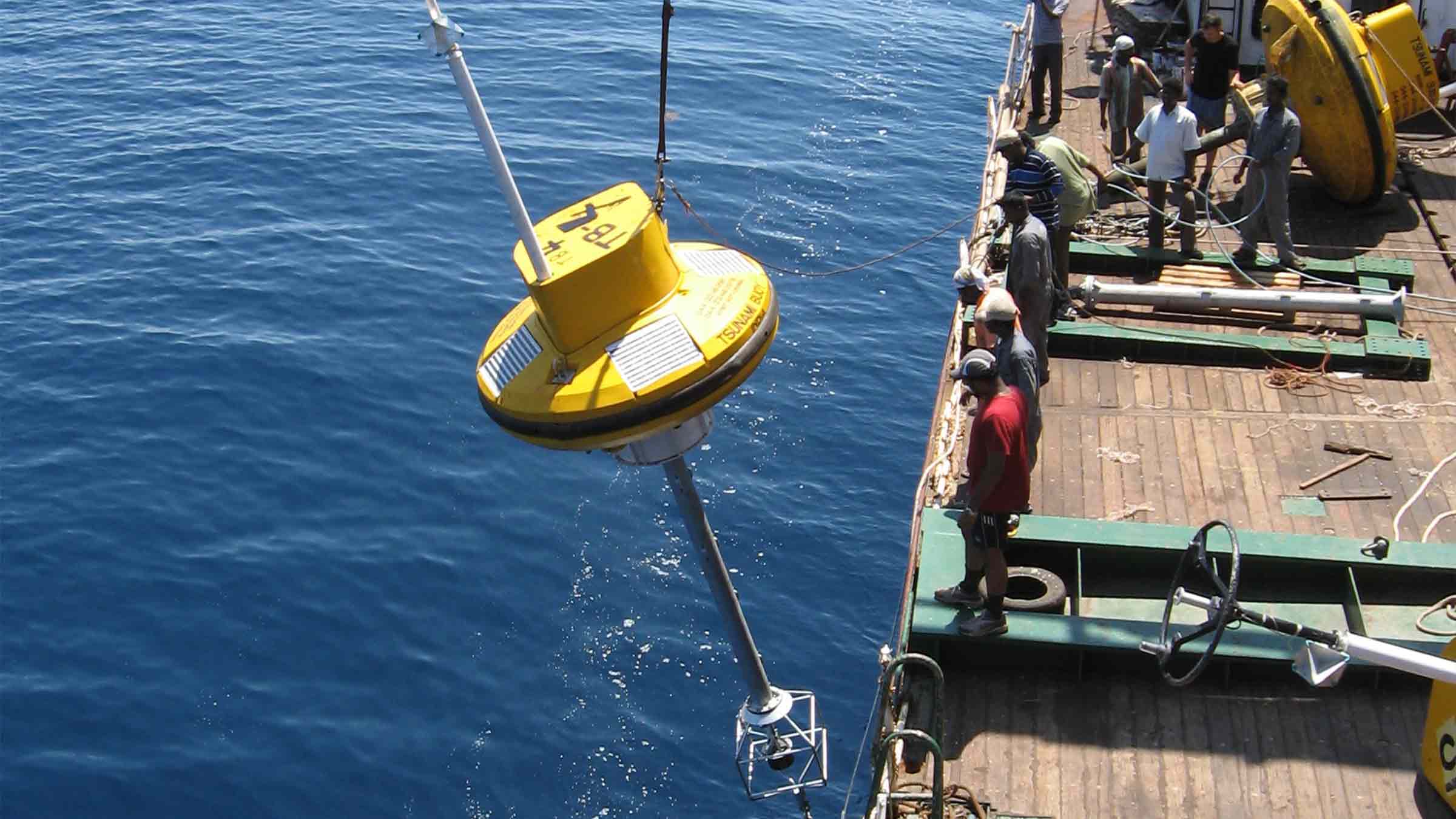
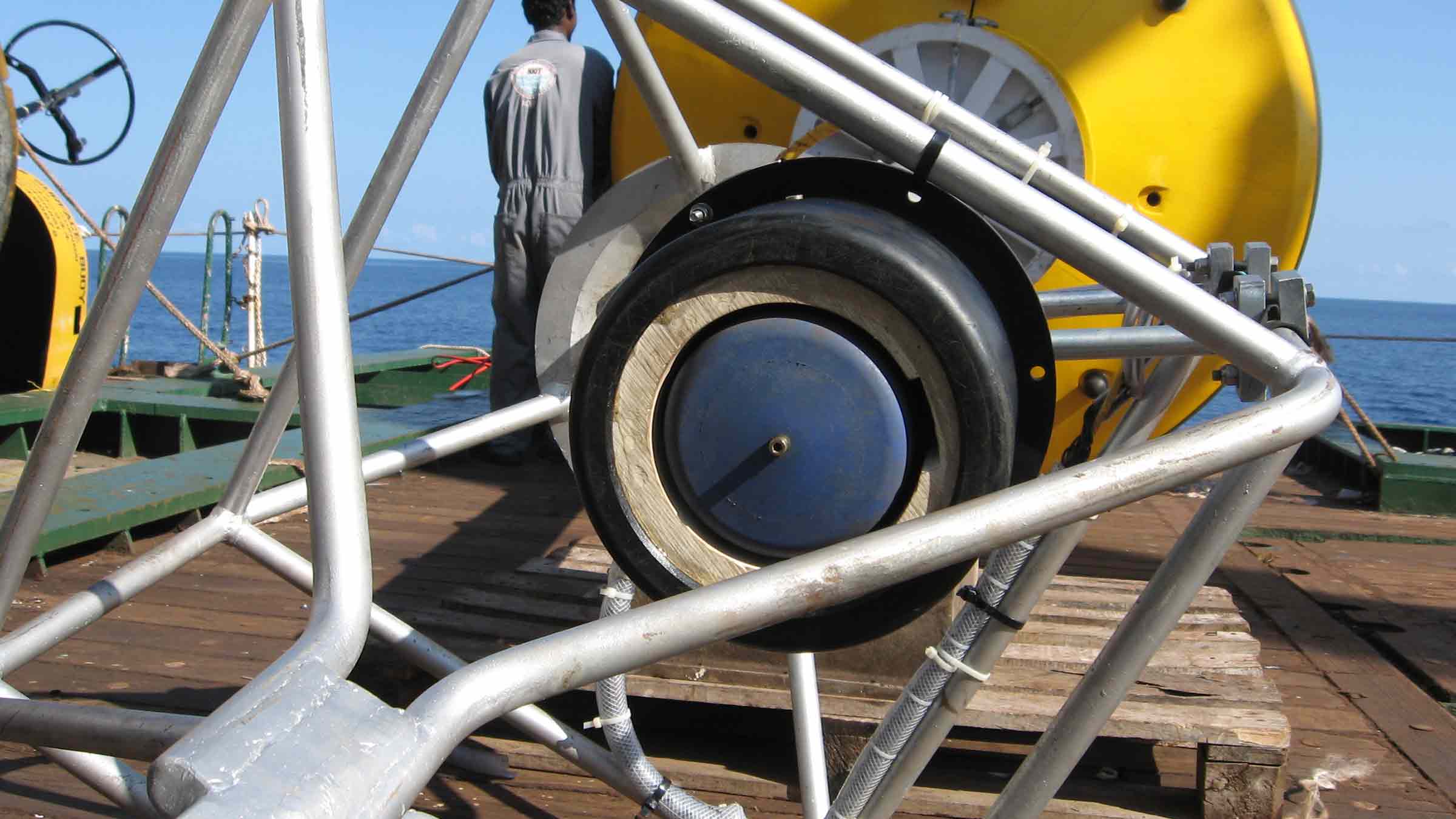
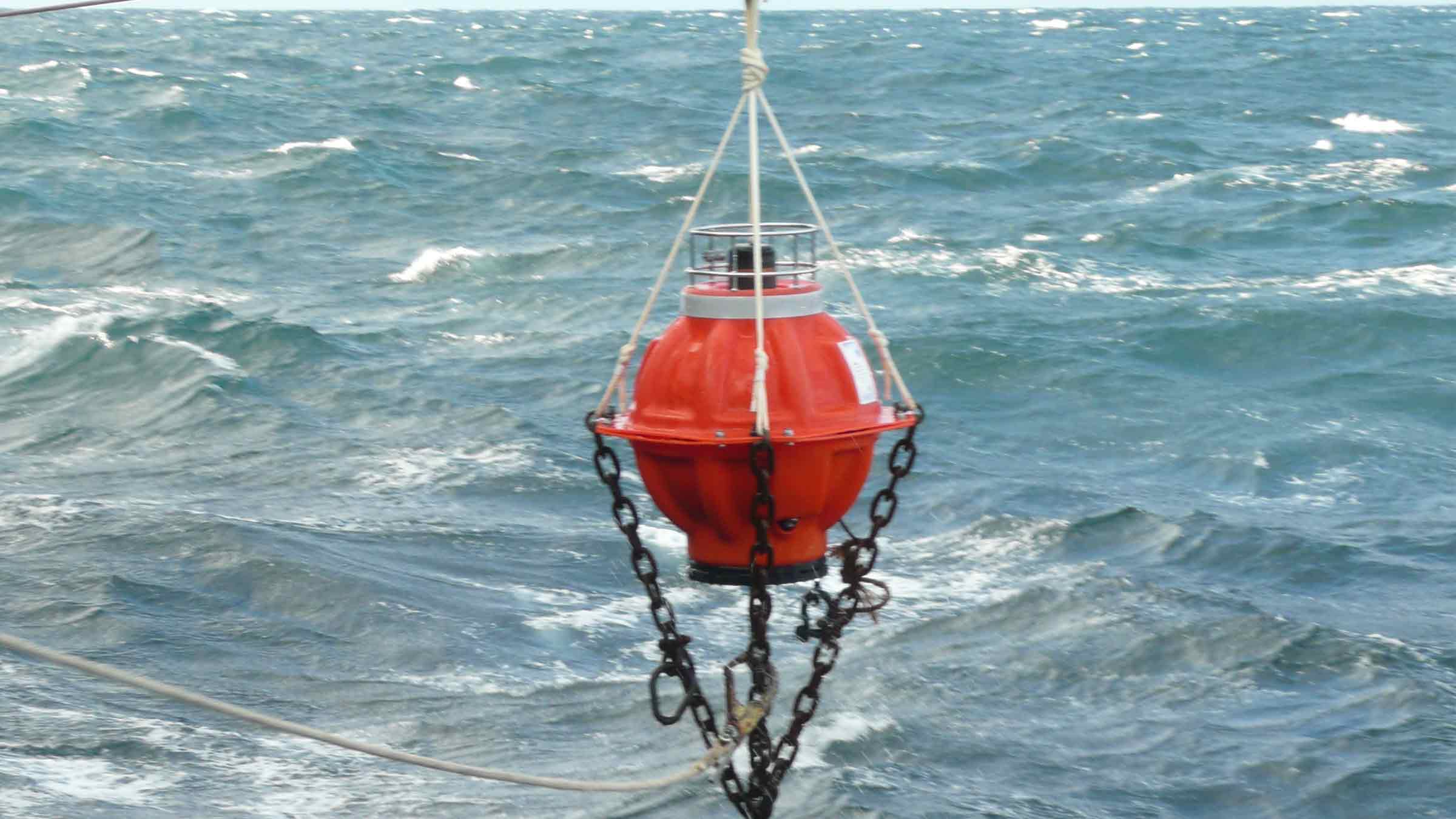
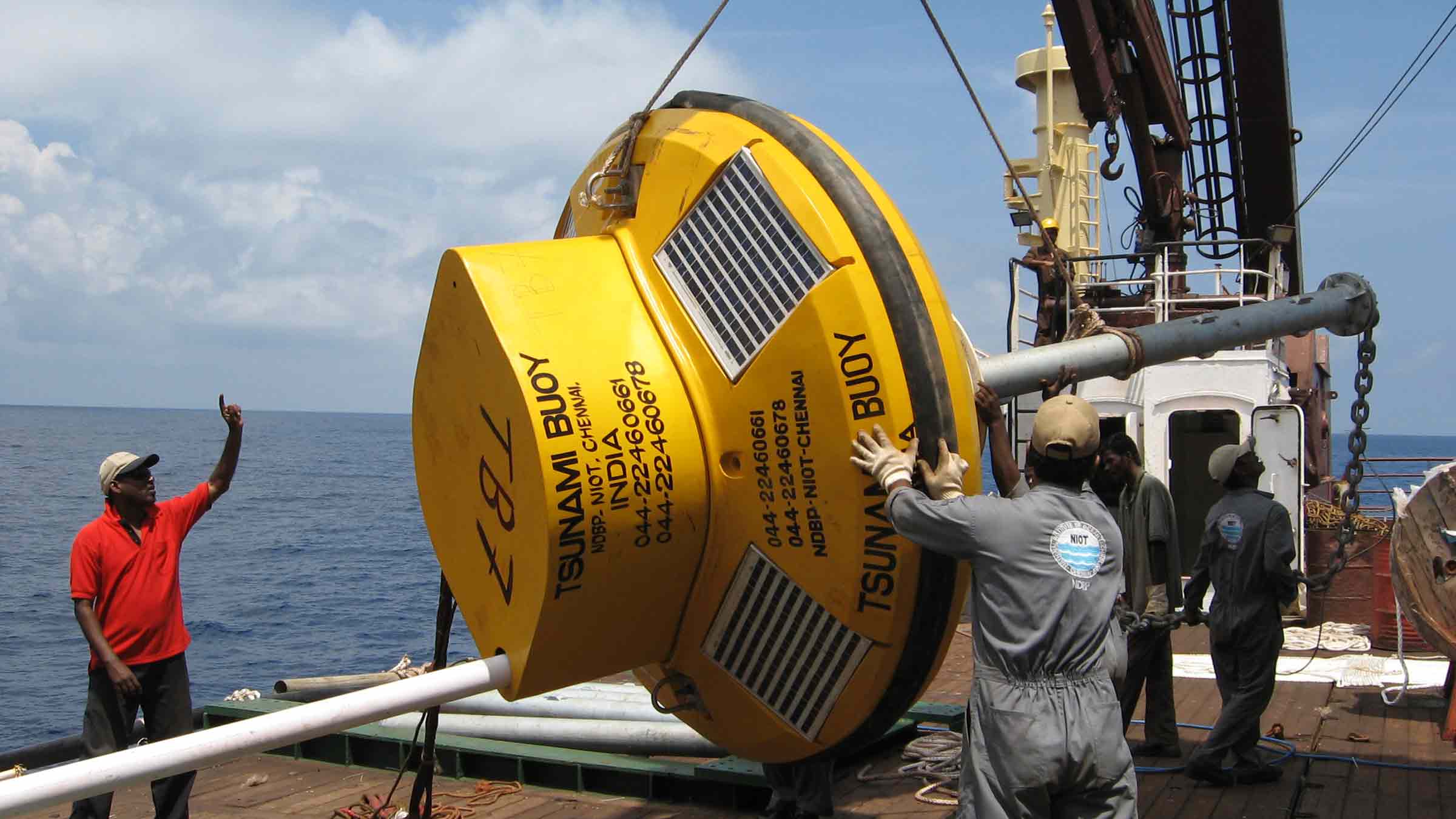
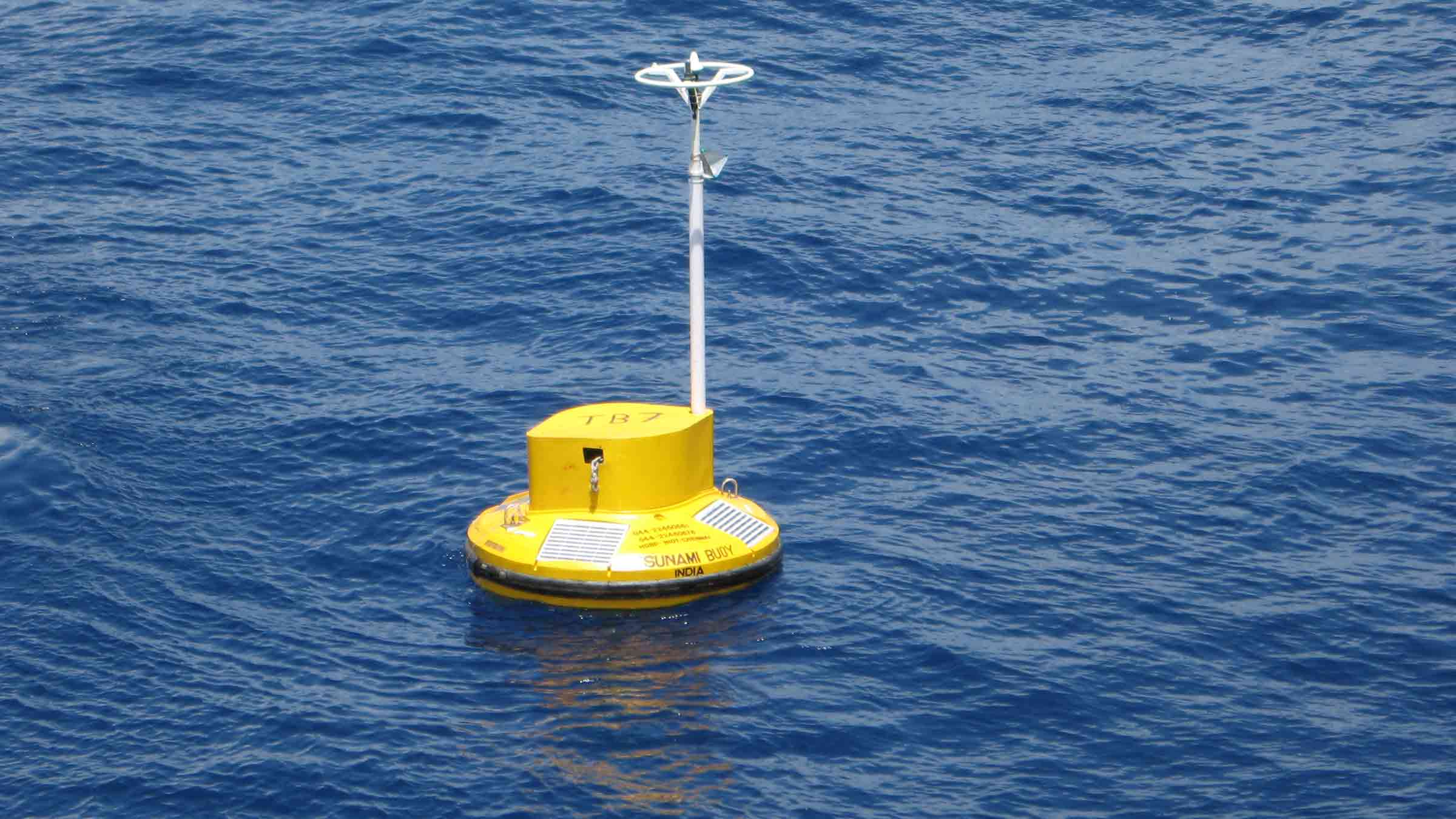
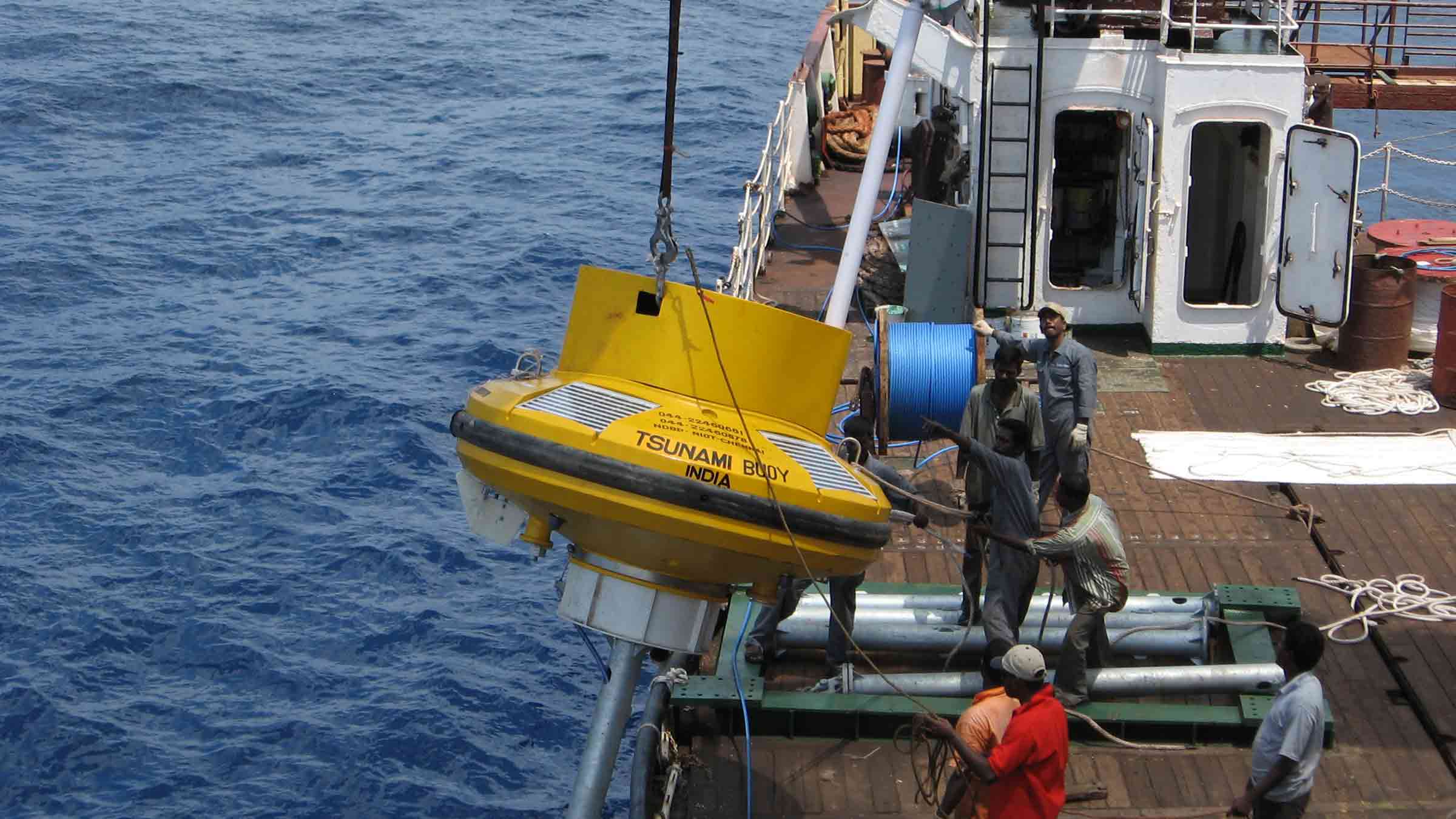
Why invest
Seabed to Surface Communications (Sonardyne)
-
Powered by 6G and Wideband 2 technology; in use global within science, energy and defence
-
Long range for deep water deployment far offshore; 19-34kHz frequency band
-
Advanced protocols to minimise data loss and re-sends
-
Directional transducer for optimised seafloor-to-surface communications
-
100 - 900 baud user payload, bi-directional
Surface to Shore Communications (MSM Ocean)
-
Uses the Iridium low earth orbit (780 km) constellation of polar orbiting satellites
-
Incorporates dual modems and antennas for redundancy
-
NETCOM-T software web application enables remote management of the tsunami buoy and BPR from Shore Control Centre
BPR Design (Sonardyne)
-
Robust all-in-one design; compact, integrated, self-powered, no cables to get damaged
-
Easy to deploy; standard depth rating of 5,000 m (option for 7,000 m)
-
Integrated release mechanism for simple recovery of seabed BPR for servicing
-
Simple to integrate surface transceiver on instrumented buoy (solar and communications)
-
2 year battery life typical; up to 10 years possible with alternative design of BPR
Tsunami Buoy (MSM Ocean)
-
Suitable for deployment in depths of up to 4,000 m
-
Aluminium superstructure with a 2.4 m diameter shock-resistant closed-cell polyethylene foam float and stainless-steel tail;
-
Multiple safety and anti-vandalism measures fitted as standard; GPS out of position alarm, unremovable solar panels, impact sensor, intrusion sensor
-
IALA compliant topmark, lighting with 5 NM luminous range
A typical TEWS configuration (Per monitoring location)
-
Seafloor deployed BPR transponder and floatation, 5,000 m rated, 2 year battery life. Sonardyne iWand back-deck and workshop test and configuration device
-
Moored, IALA-compliant communications buoy equipment equipped with sub-surface acoustic transceiver, power, navigation safety aids and redundant satellite communications gateway
-
MSM Ocean command and configuration software used to remotely control and monitor the TEWS and issue alerts
Ownership
-
Warranty: 1 year return to Sonardyne MSM Ocean service centre
-
Training; onsite or remote operator and maintainer training required
-
ITAR Controlled: No
-
UK Export License: Not required
Tsunami detection system case studies
Resources
| Feature | Type 8141 Buoy Mounted Transceiver | Type 8142-000-02 Buoy Mounted Transceiver |
|---|---|---|
| Frequency Band | LMF (14–19 kHz) | LMF (14–19 kHz) |
| Transducer Beam Shape | Directional | Directional |
| Transmit Source Level (dB re 1 µPa @ 1 m) | 196–172 dB (3 levels) | 196–172 dB (3 levels) |
| Receive Sensitivity (dB re 1 µPa) | 95–130 dB (6 levels) | 95–130 dB (6 levels) |
| Telemetry (Wideband 2) | 100–900 baud, user payload, bi-directional | 100–900 baud, user payload, bi-directional |
| Sonardyne Messaging Service (SMS) data buffer | 128 bytes | 128 bytes |
| Command/Control | Accessed through communications interface | Accessed through communications interface |
| Error Detection and Correction | Advanced protocols to minimise data loss and re-sends | Advanced protocols to minimise data loss and re-sends |
| Communications Interface | RS232 (9,600–115,200 baud) | RS232 (9,600–115,200 baud) |
| Dimensions (Length x Diameter) | 608 x 260 mm | 608 x 260 mm |
| Mass/Weight in Air/Water | Weight in Air/Water 9.75/5.26 kg | Weight in Air/Water 9.75/52 N |
| External Power Requirement | 24–50 V dc, 1 W quiescent, 100 W peak | 24–50 V dc, 1 W quiescent, 100 W peak |
| Armoured Cable to buoy Payload | Included (10 m, 8-core, with strain relief) | Included (10 m, 8-core, with strain relief) |
| Feature | Type 8303 Bottom Pressure Recorder 6 | Type 8303-6226 Bottom Pressure Recorder 6 |
| Depth Rating | 5,000 m (4,100 and 7,000 m option) | 6,000 m |
| Frequency Band | LMF (14–19 kHz) | LMF (14–19 kHz) |
| Transducer Beam Shape | Directional | Directional |
| Transmit Source Level (dB re 1 µPa @ 1 m) | 202–169 dB (5 levels) | 202–169 dB (5 levels) |
| Receive Sensitivity (dB re 1 µPa) | 80–120 dB (6 levels) | 80–120 dB (6 levels) |
| Telemetry (Wideband 2) | 100–900 baud, user payload, bi-directional | 100–900 baud, user payload, bi-directional |
| Battery Life (Monitoring) | 725 days standard (1,450 days maximum option) | 1,450 days |
| Working Load Limit (4:1) (Release) | 250 kg | 250 kg |
| Dimensions (Length x Diameter) | 1,106 x 200 mm | 1,667 x 200 mm |
| Mass/Weight in Air/Water | 28.2/14.2kg (standard 5,000 m option) | 49.5 kg/235 N |
| Pressure Sensor | 4,100 m (7,000 m option) | 6,800 m range |
| BPR Floatation Collar | Included (nett buoyancy 300 N) | n/a |
| Feature | Floatation for Bottom Pressure Recorder 6 | |
| Depth Rating | n/a | 6,000 m |
| Dimensions (Diameter) | n/a | 857 mm |
| Mass/Weight in Water | n/a | 211 kg/760 N |
